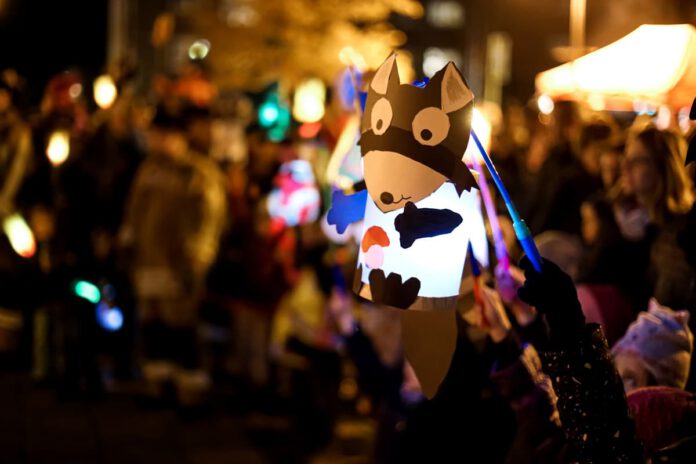The lanterns are glowing once again: February 2nd marks Liichtmessdag, one of Luxembourg’s oldest traditions. As they do every year, children across the country head out in the afternoon with their handcrafted “Liichtebengelcher” (lanterns), going door to door while singing the traditional “Léiwer Härgottsblieschen” in exchange for sweets and small change.
At first glance, this custom might remind you of similar traditions: In Germany, children parade through the streets with lanterns on November 11th singing St. Martin’s songs, while in the USA, “Trick or Treat” at Halloween has long been a cultural staple. Yet Luxembourg’s Liichtmessdag has its own distinct character: Unlike the American Halloween tradition, where lighting plays no particular role, here light is at the very heart of the custom. And while German neighbors pay tribute to St. Martin, Luxembourg has its own patron saint in “Härgottsblieschen” – even if most people don’t know who that is…
“Léiwer Härgottsblieschen…”
These are the opening words of the song that children sing at every door. But who or what is actually being celebrated here? What is a “Härgottsblieschen”? As a Luxembourger who has sung this song countless times in childhood and heard it even more often from singing children at my door, I can assure you that neither I nor anyone else knew what a “Härgottsblieschen” was. But now I’ve discovered it!
“Blieschen” is actually the Luxembourgish pet form of the admittedly very old-fashioned name “Blasius” – the song celebrates Saint Blasius, whose feast day is February 3rd. He is the patron saint of numerous crafts and one of the fourteen Holy Helpers, said to protect people from throat ailments, ulcers, and the plague.
While few people know this today, the traditional Candlemas song’s lyrics have little to do with the contemporary reality of the custom. The song seriously asks for “bacon and peas” – which today’s children would probably politely decline. Thankfully, the rewards have evolved significantly toward sweets and pocket money!
Tradition in the Face of Change
The Liichtmessdag has not escaped the winds of change sweeping through modern times. Where once large throngs of children roamed the villages, now smaller groups are often seen, usually accompanied by adults. In some Maisons Relais, the tradition has been relocated right into school complexes where it becomes the older students’ turn to enjoy the festive songs. While for many long-established Luxembourgers, this tradition is as commonplace as having Bouneschlupp for lunch, many newcomers must be introduced to the significance and practices involved.
The road safety authority, Sécurité routière, urges caution: Regardless of lanterns, wearing bright clothing and reflective accessories is essential. Drivers should be especially vigilant if they encounter a group of singing lantern-carrying children on February 2nd — no need for alarm, it’s not a flash mob, but rather a vibrant expression of Luxembourgish customs in action.
Thus, the Liichtmessdag remains one of Luxembourg’s most striking and unique traditions””even though LEDs have replaced candlelight, and requests for bacon and peas have given way to a preference for sweets. What matters is that the children’s eyes sparkle as brightly as their lanterns.
